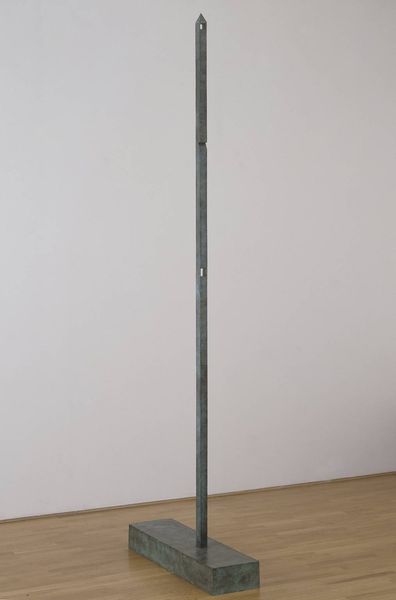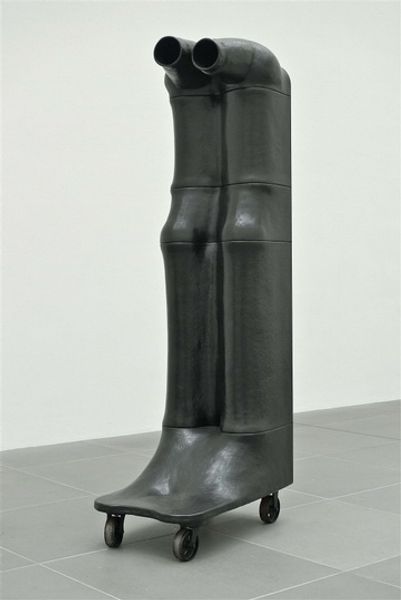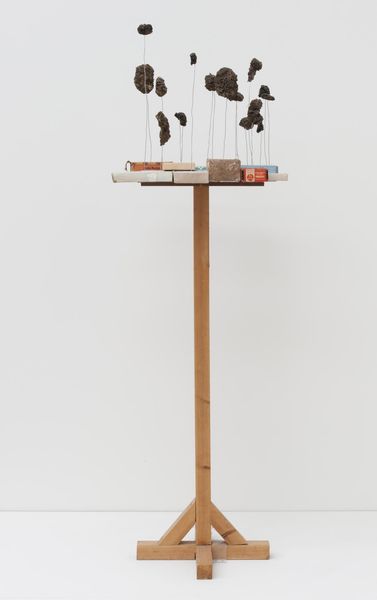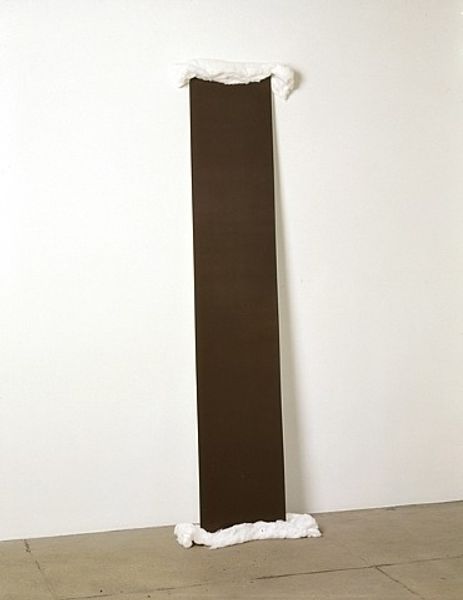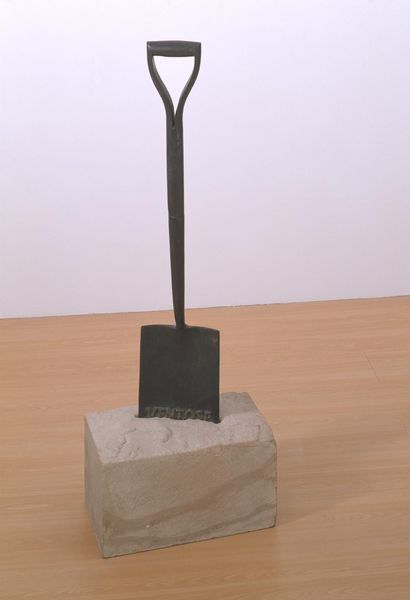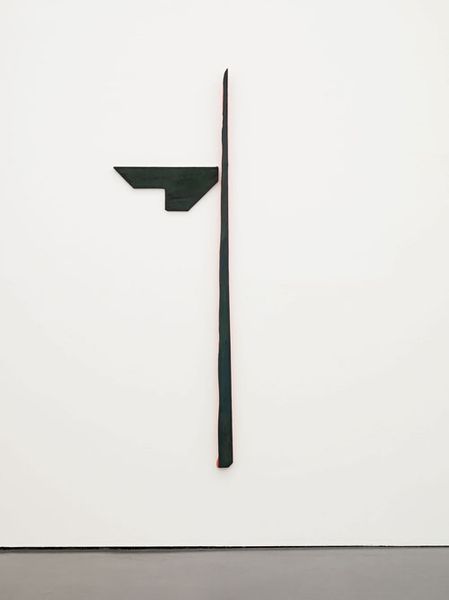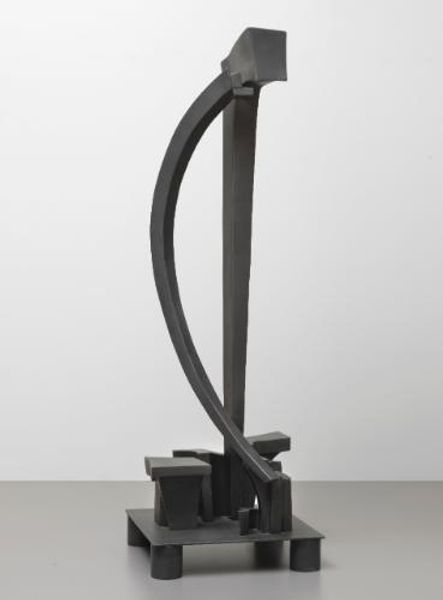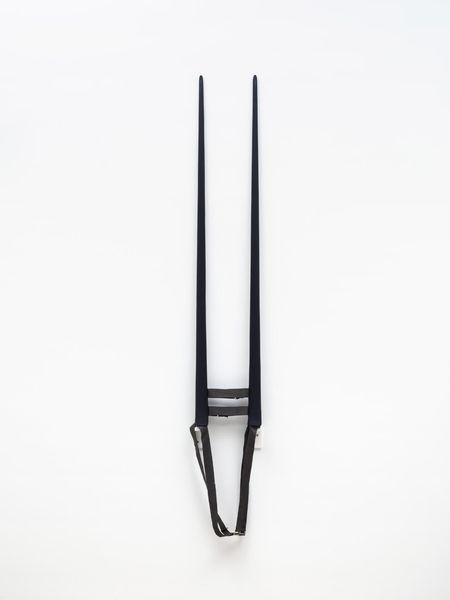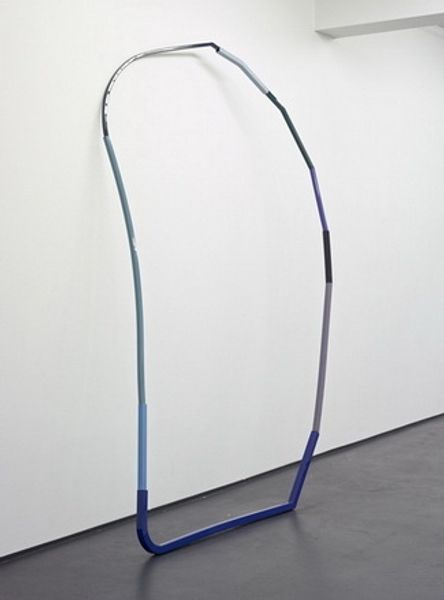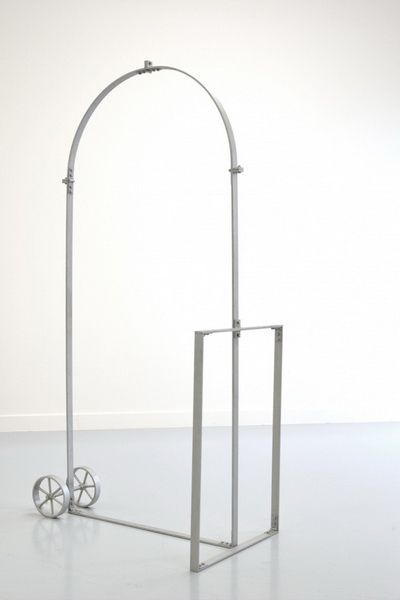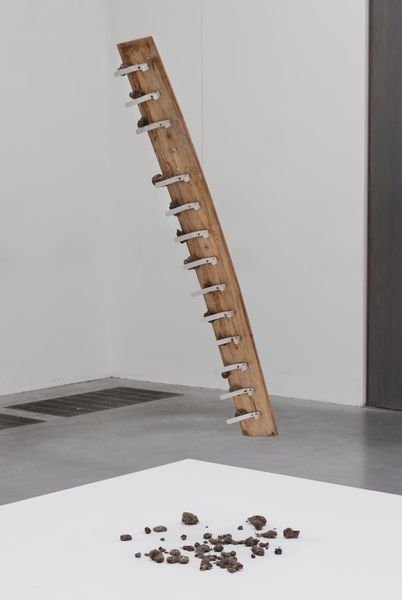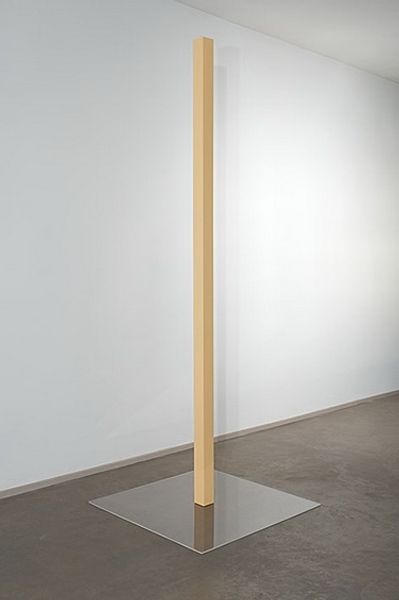
Dimensions: object: 1663 x 220 x 240 mm
Copyright: © Martin Boyce | CC-BY-NC-ND 4.0 DEED, Photo: Tate
Curator: Oh, this is interesting. Martin Boyce's sculpture… it’s untitled, which feels appropriate, perched there on its cardboard pedestal. My first thought: charmingly awkward. Editor: Awkward, yes, but deliberately so, I think. That form on top, a deconstructed letter, almost totemic. It makes me think of ancient scripts, lost alphabets. Curator: Absolutely, there's a primitive feel. Like a child's drawing trying to channel something profound. The materials too, the cardboard, the metal, it's all so… rough. Editor: It’s the contrast that gets me—the industrial with the handmade. The geometric precision fighting with the organic curves. It’s a symbol of our age, I think. Curator: Maybe. It also feels like a joke, a gentle poke at the seriousness of sculpture. Like saying, "Hey, it's just stuff." Editor: Perhaps, but even "just stuff" can hold immense cultural weight. It all depends on how you look at it, doesn't it? Curator: Always. Which makes all this looking around a bit of an adventure. Editor: Indeed. Let's keep going.
Comments
Join the conversation
Join millions of artists and users on Artera today and experience the ultimate creative platform.
tate 8 months ago
⋮
Untitled 2009 is a plinth-based constructed sculpture that resembles an African mask. It is one of a series of works Boyce has made since 1998 where a mask element is derived from a plywood leg splint designed by Charles and Ray Eames (1907–1978, 1912–1988). Charles and Ray Eames are best known for the moulded plywood chair they designed together in 1945, which has since become a modern design classic. However, during the Second World War they were commissioned by the United States Navy to design a lightweight moulded plywood splint for use by injured servicemen, five thousand of which were mass produced. The splint was made from thin plywood steamed into the necessary curving shapes suitable to support and cradle an injured leg. Boyce was attracted to the splint’s highly sculptural yet functional qualities. In Untitled, sections of the Eames leg splint have been reconfigured to give it the appearance of a three-dimensional biomorphic form. The work’s organic forms also directly reference the splint sculptures which Ray Eames made alongside her design work, thus highlighting the connections between the language of art and design. Untitled also alludes to the influence of artefacts from Africa and Oceania on modernist artists such as Pablo Picasso (1881–1973). Untitled is displayed on a plinth made from the leg splint’s original brown cardboard packaging with printed graphics.
